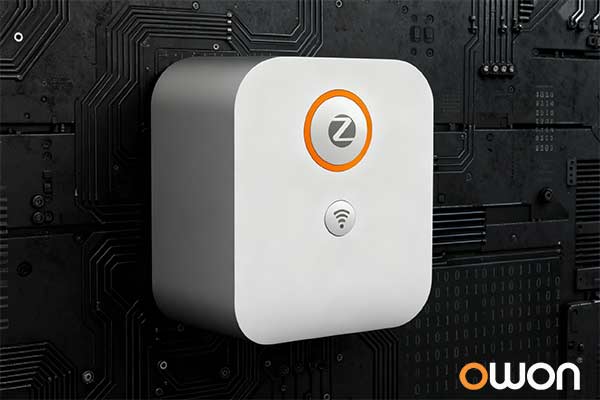For system integrators and solution providers, the promise of smart energy monitoring often hits a wall: vendor lock-in, unreliable cloud dependencies, and inflexible data access. It’s time to break down that wall.
As a system integrator or OEM, you’ve likely faced this scenario: You deploy a smart metering solution for a client, only to find the data is trapped in a proprietary cloud. Custom integrations become a nightmare, ongoing costs pile up with API calls, and the entire system fails when the internet drops. This is not the robust, scalable solution your B2B projects demand.
The convergence of Smart Meter WiFi Gateways and Home Assistant offers a powerful alternative: a local-first, vendor-agnostic architecture that puts you in full control. This article explores how this combination is redefining professional energy management.
The B2B Pain Point: Why Generic Smart Metering Solutions Fall Short
When your business revolves around delivering tailored, reliable solutions, off-the-shelf products reveal critical limitations:
- Integration Incompatibility: Inability to feed real-time energy data directly into existing Building Management Systems (BMS), SCADA, or custom enterprise software.
- Data Sovereignty and Cost: Sensitive commercial energy data traversing third-party servers, coupled with unpredictable and escalating cloud service fees.
- Limited Customization: Pre-packaged dashboards and reports that cannot be adapted to meet specific client Key Performance Indicators (KPIs) or unique project requirements.
- Scalability and Reliability Concerns: The need for a stable, local-first system that operates reliably even during internet outages, crucial for critical monitoring applications.
The Solution: A Local-First Architecture with Home Assistant at the Core
The solution lies in adopting an open, flexible architecture. Here’s how the key components work together:
1. The Smart Meter(s): Devices like our PC311-TY (Single-Phase) or PC321 (Three-Phase) power meters act as the data source, providing high-precision measurements of voltage, current, power, and energy.
2. The Smart Meter WiFi Gateway: This is the crucial bridge. A gateway compatible with ESPHome or running a custom firmware can communicate with the meters via local protocols like Modbus-TCP or MQTT. It then acts as a local MQTT broker or a REST API endpoint, publishing the data directly to your local network.
3. Home Assistant as the Integration Hub: Home Assistant subscribes to the MQTT topics or polls the API. It becomes the unified platform for data aggregation, visualization, and, most importantly, automation. Its ability to integrate with thousands of other devices allows you to create complex energy-aware scenarios.
Why “Local-First” is a Winning Strategy for B2B Projects
Adopting this architecture provides tangible business advantages for you and your clients:
- Complete Data Autonomy: Data never leaves the local network unless you want it to. This enhances security, privacy, and compliance, and eliminates recurring cloud fees .
- Unmatched Integration Flexibility: The use of standard protocols like MQTT and Modbus-TCP means the data is structured and ready to be consumed by virtually any modern software platform, from Node-RED to custom Python scripts, dramatically reducing development time .
- Guaranteed Offline Operation: Unlike cloud-dependent solutions, a local gateway and Home Assistant continue to collect, log, and control devices even when the internet is down, ensuring data integrity and operational continuity .
- Future-Proofing Your Deployments: The open-source foundation of tools like ESPHome means you are never tied to a single vendor’s roadmap. You can adapt, extend, and customize the system to meet evolving needs, protecting your client’s long-term investment.
Use Case: Solar PV Monitoring and Load Automation
Challenge: A solar integrator needed to monitor residential solar production and household consumption, then use that data to automate loads (like EV chargers or water heaters) to maximize self-consumption, all within a custom client portal.
Solution with Our Platform:
- Deployed a PC311-TY for consumption and production data.
- Connected it to a WiFi Gateway running ESPHome, configured to publish data via MQTT.
- Home Assistant ingested the data, created automations to shift loads based on excess solar generation, and fed the processed data to a custom portal via its API.
Result: The integrator maintained full data control, avoided recurring cloud fees, and delivered a unique, branded automation experience that secured them a premium in the market.
The OWON Advantage: Your Hardware Partner for Open Solutions
At OWON, we understand that our B2B partners need more than just a product; they need a reliable platform for innovation.
- Hardware Built for Professionals: Our smart meters and gateways feature DIN-rail mounting, wide operating temperature ranges, and certifications (CE, FCC) for reliable performance in commercial environments.
- ODM/OEM Expertise: Need a gateway with specific hardware modifications, custom branding, or pre-loaded ESPHome configurations for deployment? Our OEM/ODM services can deliver a turnkey solution tailored to your project, saving you development time and cost.
- End-to-End Support: We provide comprehensive documentation for MQTT topics, Modbus registers, and API endpoints, ensuring your technical team can achieve a seamless and rapid integration.
Your Next Step Towards Data-Independent Energy Solutions
Stop letting closed ecosystems limit the solutions you can build. Embrace the flexibility, control, and reliability of a local-first, Home Assistant-centric architecture.
Ready to empower your energy management projects with true data independence?
- Contact our technical sales team to discuss your specific project requirements and receive a customized proposal.
- Download our technical documentation for the Smart Meter WiFi Gateway and compatible meters.
- Inquire about our ODM program for high-volume or highly customized projects.
Post time: Oct-29-2025
